
Global advertising conglomerate Interpublic Group (NYSE:IPG) reported Q2 CY2025 results exceeding the market’s revenue expectations, with sales up 9% year on year to $2.54 billion. Its non-GAAP profit of $0.75 per share was 33.7% above analysts’ consensus estimates.
Is now the time to buy Interpublic Group? Find out by accessing our full research report, it’s free.
Interpublic Group (IPG) Q2 CY2025 Highlights:
- Revenue: $2.54 billion vs analyst estimates of $2.18 billion (9% year-on-year growth, 16.3% beat)
- Adjusted EPS: $0.75 vs analyst estimates of $0.56 (33.7% beat)
- Operating Margin: 9.6%, down from 13.7% in the same quarter last year
- Organic Revenue fell 3.5% year on year (1.7% in the same quarter last year)
- Market Capitalization: $8.88 billion
Company Overview
With a history dating back to 1902 and roots in the McCann-Erickson agency, Interpublic Group (NYSE:IPG) is a marketing and communications holding company that owns agencies specializing in advertising, media buying, public relations, and digital marketing services.
Revenue Growth
A company’s long-term performance is an indicator of its overall quality. Any business can have short-term success, but a top-tier one grows for years.
With $9.21 billion in revenue over the past 12 months, Interpublic Group is one of the larger companies in the business services industry and benefits from a well-known brand that influences purchasing decisions. However, its scale is a double-edged sword because it’s challenging to maintain high growth rates when you’ve already captured a large portion of the addressable market. For Interpublic Group to boost its sales, it likely needs to adjust its prices, launch new offerings, or lean into foreign markets.
As you can see below, Interpublic Group’s 2.1% annualized revenue growth over the last five years was sluggish. This shows it failed to generate demand in any major way and is a rough starting point for our analysis.
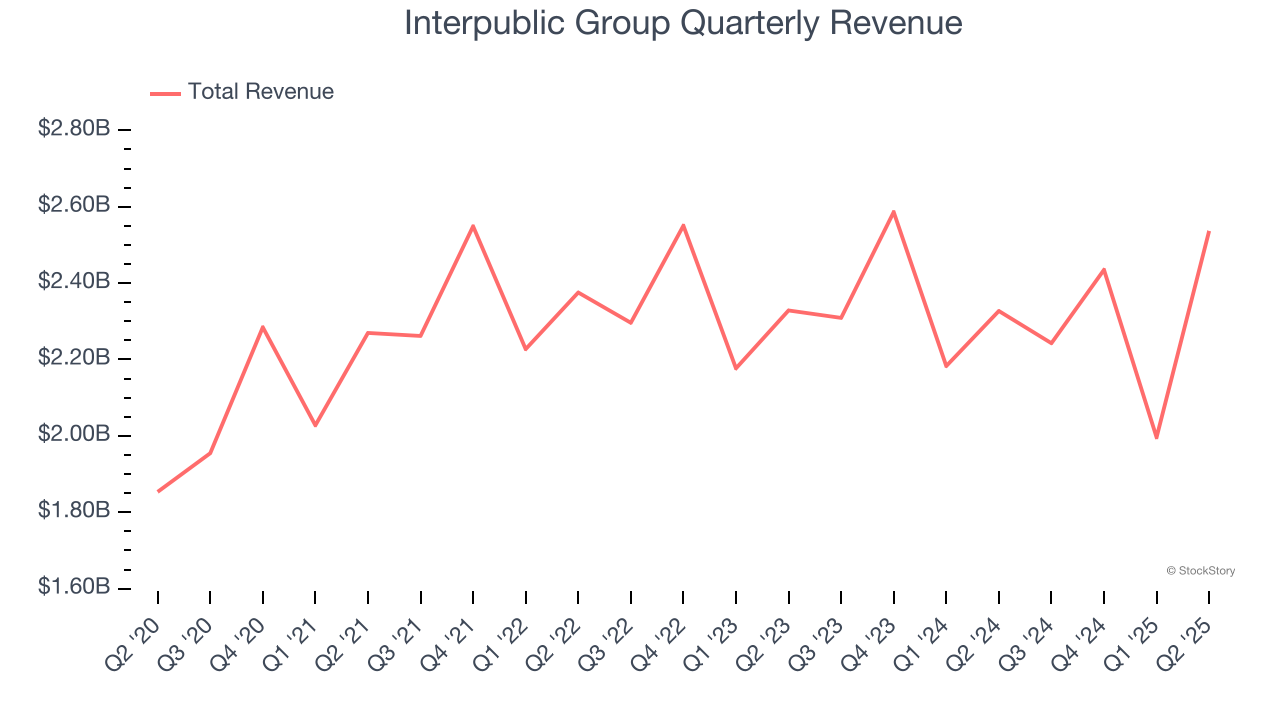
We at StockStory place the most emphasis on long-term growth, but within business services, a half-decade historical view may miss recent innovations or disruptive industry trends. Interpublic Group’s recent performance shows its demand has slowed as its revenue was flat over the last two years. 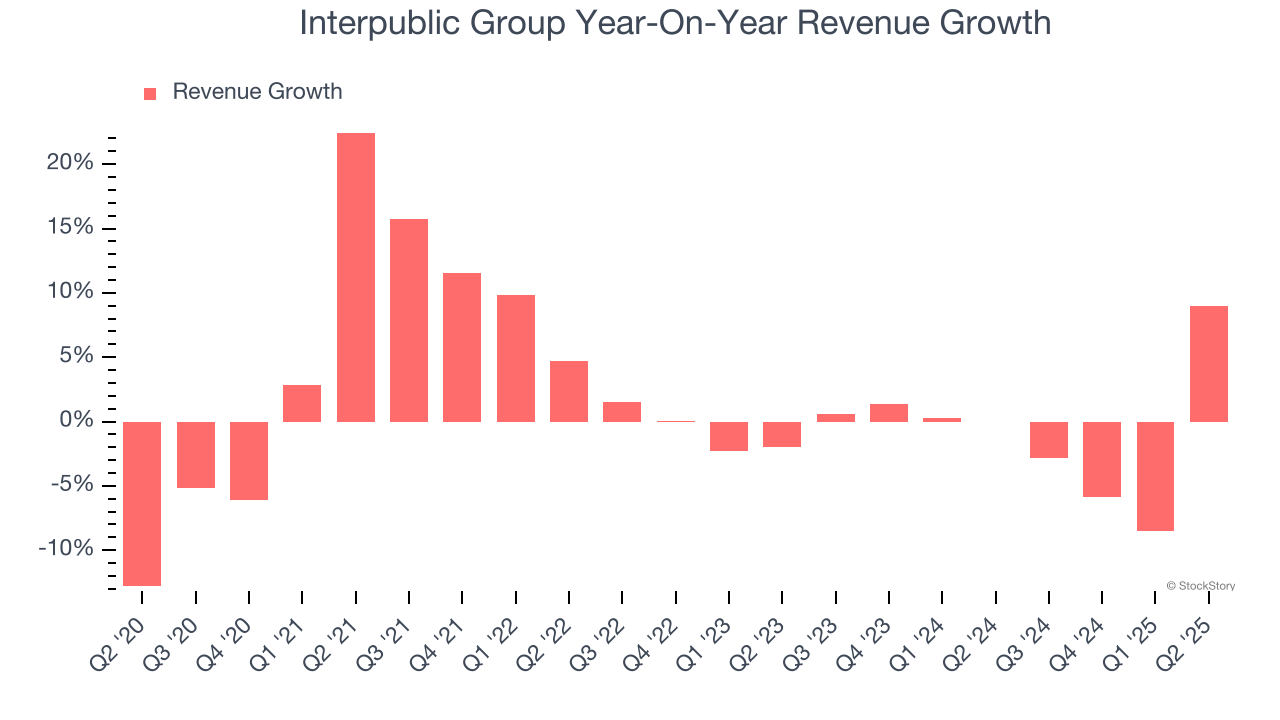
We can dig further into the company’s sales dynamics by analyzing its organic revenue, which strips out one-time events like acquisitions and currency fluctuations that don’t accurately reflect its fundamentals. Over the last two years, Interpublic Group’s organic revenue was flat. Because this number aligns with its normal revenue growth, we can see the company’s core operations (not acquisitions and divestitures) drove most of its results. 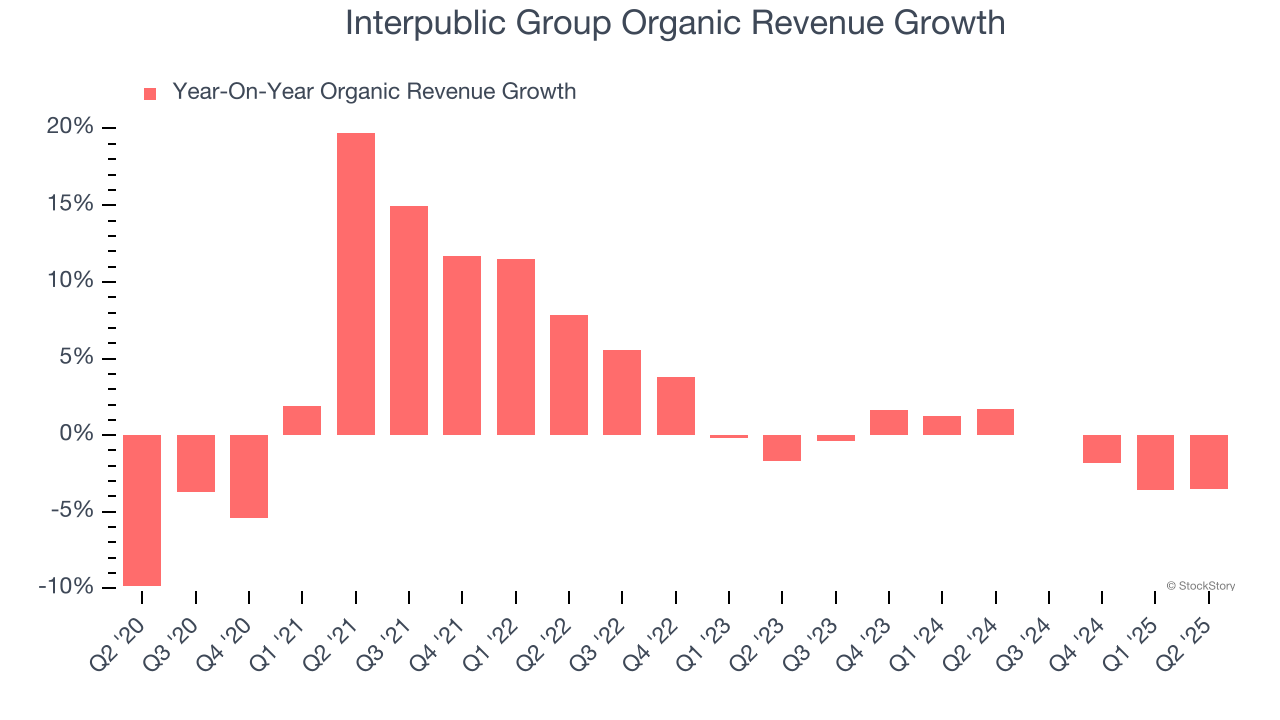
This quarter, Interpublic Group reported year-on-year revenue growth of 9%, and its $2.54 billion of revenue exceeded Wall Street’s estimates by 16.3%.
Looking ahead, sell-side analysts expect revenue to decline by 4.4% over the next 12 months, a deceleration versus the last two years. This projection doesn't excite us and indicates its products and services will see some demand headwinds.
Today’s young investors won’t have read the timeless lessons in Gorilla Game: Picking Winners In High Technology because it was written more than 20 years ago when Microsoft and Apple were first establishing their supremacy. But if we apply the same principles, then enterprise software stocks leveraging their own generative AI capabilities may well be the Gorillas of the future. So, in that spirit, we are excited to present our Special Free Report on a profitable, fast-growing enterprise software stock that is already riding the automation wave and looking to catch the generative AI next.
Operating Margin
Interpublic Group has managed its cost base well over the last five years. It demonstrated solid profitability for a business services business, producing an average operating margin of 13.5%.
Looking at the trend in its profitability, Interpublic Group’s operating margin decreased by 3.1 percentage points over the last five years. This raises questions about the company’s expense base because its revenue growth should have given it leverage on its fixed costs, resulting in better economies of scale and profitability.
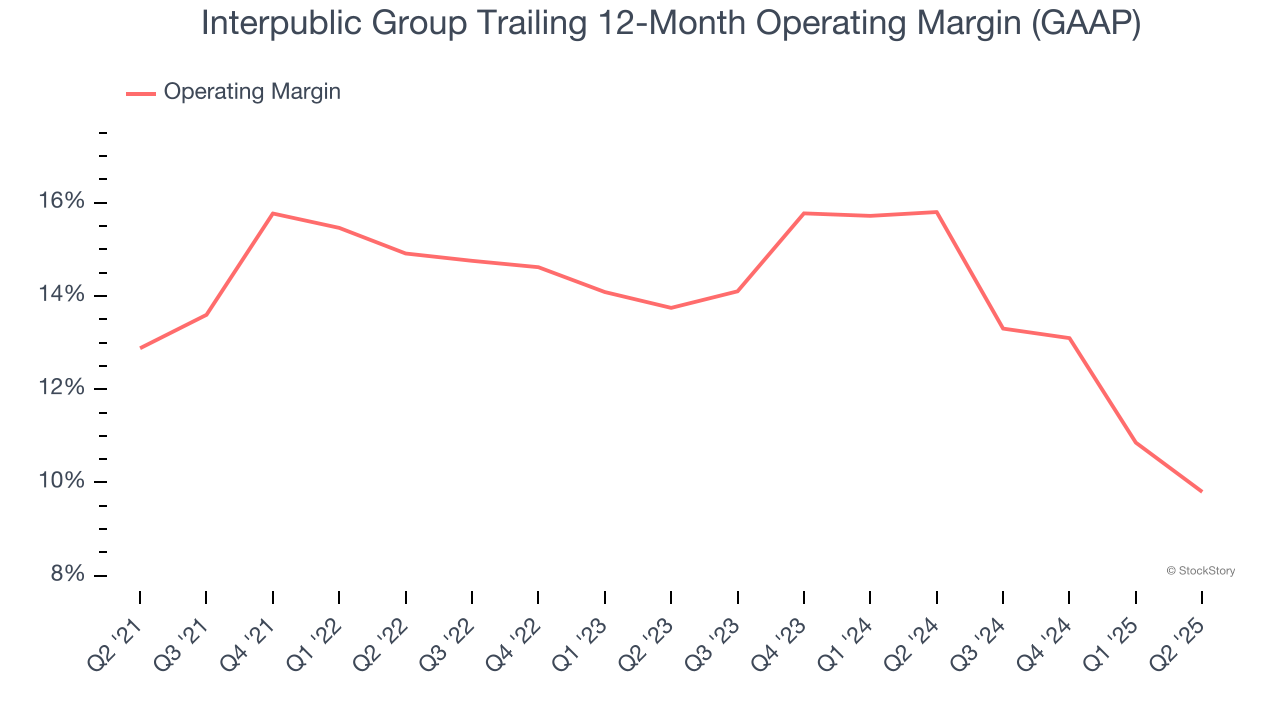
This quarter, Interpublic Group generated an operating margin profit margin of 9.6%, down 4.1 percentage points year on year. This contraction shows it was less efficient because its expenses grew faster than its revenue.
Earnings Per Share
Revenue trends explain a company’s historical growth, but the long-term change in earnings per share (EPS) points to the profitability of that growth – for example, a company could inflate its sales through excessive spending on advertising and promotions.
Interpublic Group’s EPS grew at a remarkable 11.1% compounded annual growth rate over the last five years, higher than its 2.1% annualized revenue growth. This tells us the company became more profitable on a per-share basis as it expanded.
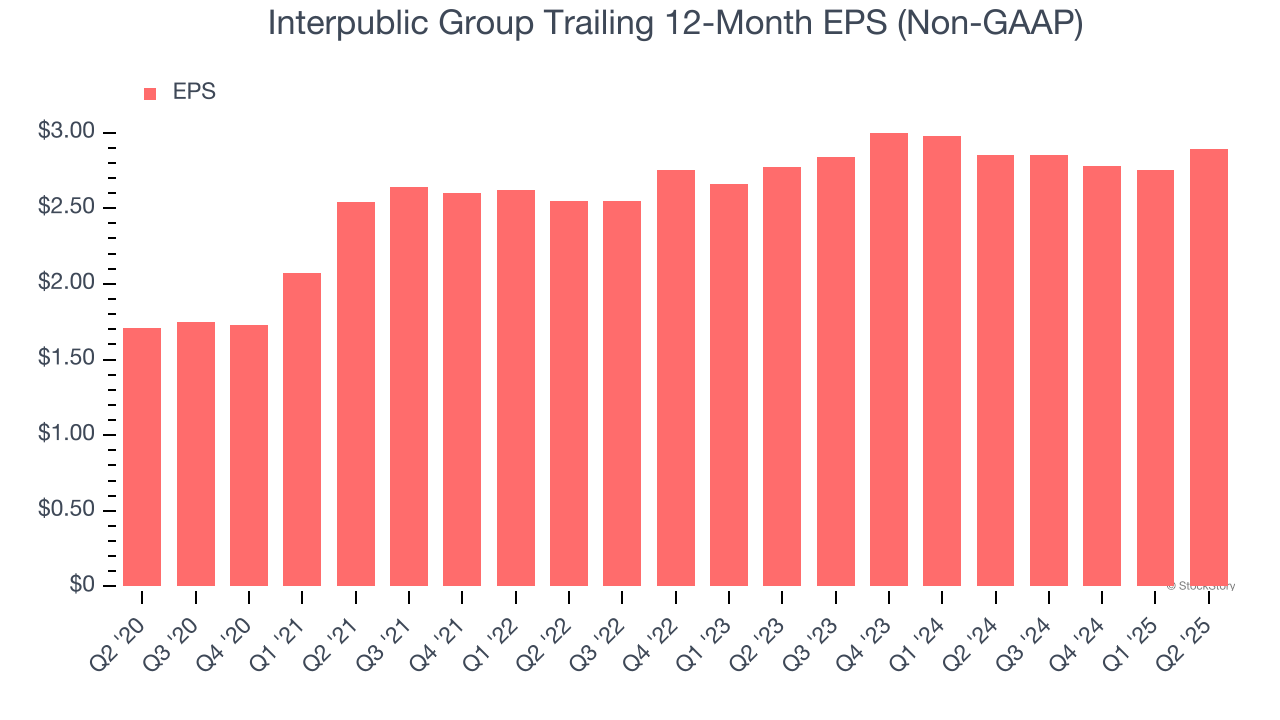
We can take a deeper look into Interpublic Group’s earnings quality to better understand the drivers of its performance. A five-year view shows that Interpublic Group has repurchased its stock, shrinking its share count by 5%. This tells us its EPS outperformed its revenue not because of increased operational efficiency but financial engineering, as buybacks boost per share earnings. 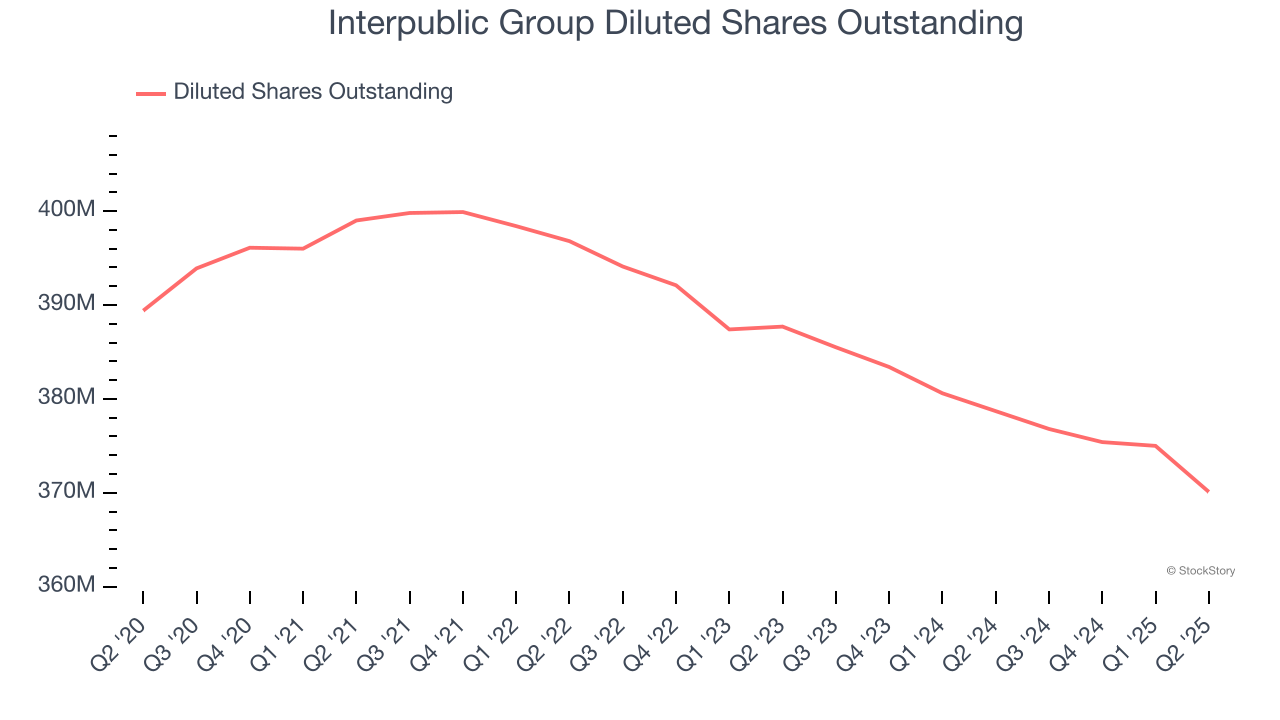
Like with revenue, we analyze EPS over a shorter period to see if we are missing a change in the business.
For Interpublic Group, its two-year annual EPS growth of 2.1% was lower than its five-year trend. We hope its growth can accelerate in the future.
In Q2, Interpublic Group reported EPS at $0.75, up from $0.61 in the same quarter last year. This print easily cleared analysts’ estimates, and shareholders should be content with the results. Over the next 12 months, Wall Street expects Interpublic Group’s full-year EPS of $2.89 to shrink by 5%.
Key Takeaways from Interpublic Group’s Q2 Results
We were impressed by how significantly Interpublic Group blew past analysts’ EPS expectations this quarter. We were also excited its revenue outperformed Wall Street’s estimates by a wide margin. On the other hand, its organic revenue was in line. Zooming out, we think this was a good print with some key areas of upside. The stock traded up 1.8% to $24.45 immediately after reporting.
Interpublic Group had an encouraging quarter, but one earnings result doesn’t necessarily make the stock a buy. Let’s see if this is a good investment. The latest quarter does matter, but not nearly as much as longer-term fundamentals and valuation, when deciding if the stock is a buy. We cover that in our actionable full research report which you can read here, it’s free.
